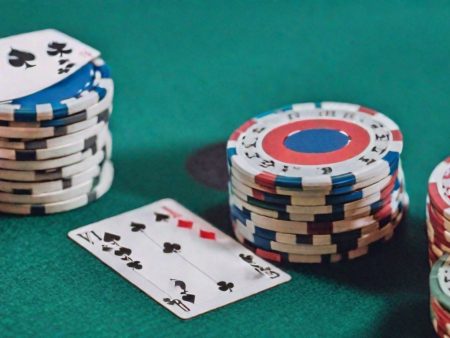Poker is not just a game of luck; it’s a game of strategy and psychology. One of the most important elements of strategy is understanding hand ranges. This concept refers to the set of cards a player is willing to play in a specific situation. A good understanding of these ranges helps players make better decisions and increase their chances of success at the poker table.
There are several types of ranges, including call, raise, 3-bet, and 4-bet. Each one defines what hands a player is willing to play in different situations.
What is a Hand Range?
A hand range is the set of cards a player might hold in a particular situation, such as before the flop (pre-flop) or after the community cards are revealed (post-flop). Understanding these ranges is crucial at different stages of the game, as it helps players make more informed decisions and improve their profitability.
Hand Ranges Pre-Flop: The Starting Phase
Pre-flop is the first round of the game, where players receive their hole cards (two face-down cards). Knowing which hands to play and which to fold at this stage is critical. Pre-flop ranges will vary depending on the game variant (Texas Hold’em, Omaha, etc.) and the playing style of your opponents. In Texas Hold’em, one of the most popular poker variants, there is a basic strategy that can help you decide how to play your cards.
- Strong Hands (e.g., A-A, K-K, Q-Q, A-K) are usually raised pre-flop because they have a high chance of winning. The goal here is to increase the pot as much as possible.
- Medium Hands (e.g., 10-10, J-J, Q-J, A-x suited) can also be raised, but they are more vulnerable. Sometimes, it’s better to just limp (make the minimum bet) with these hands.
- Speculative Hands (e.g., 5-6 suited) should be played cautiously, as they can potentially turn into strong hands but often rely on favorable cards coming on the flop.
- Bluffing Hands (e.g., 7-2) are typically folded but can be used strategically to confuse your opponents. These hands rarely form strong combinations but can be useful for bluffing and diversifying your play.
When you’re playing from a later position (when you’re one of the last to act), you have the advantage of seeing your opponents’ actions before you make your decision. This allows for more informed choices.
If your opponents are aggressive, you can raise with stronger hands. If they’re passive, you can limp with weaker hands. Remember, pre-flop is just the beginning of the game, and your decisions should be well thought out.
Read also: Flop in poker: types, playing different situations with examples.
Hand Ranges Post-Flop: After the Community Cards
Once the community cards are revealed (the flop), the game moves to the post-flop phase. At this point, it’s important to assess how your hole cards interact with the community cards and consider your opponents’ positions and actions.
- Strong Range includes hands that have formed strong combinations or those with good potential to improve on the turn or river. For example, a pair of queens or a flush draw.
- Medium Range consists of hands that could improve but aren’t yet strong. These might include middle pairs or draws that aren’t completed yet.
- Weak Range is made up of hands that require significant improvement to become competitive. These could include incomplete draws or hands that are unlikely to form a strong combination.
- Bluffing Range contains hands that have little potential for a strong hand but could be used for bluffing and misleading opponents.
Your position at the table remains an important factor. Playing from a late position allows you to see what your opponents do before you act, giving you an edge in making decisions. Additionally, the size of the pot and the stakes at play influence whether or not you should continue.
How to Improve Your Range Analysis Skills
A successful poker player understands that every decision counts. That’s why it’s essential to develop the ability to read your opponents and predict their possible actions. Using charts and matrices to visualize ranges can help you better understand various situations and make better decisions. Post-flop range analysis depends on a variety of factors, such as your hole cards, the community cards, your opponents’ styles, and the current situation in the game. The more you play and analyze your actions, the better you’ll become at knowing which hands to play and which to fold.
Read also: Downswing in poker and how to deal with it.
Hand ranges are a fundamental aspect of poker strategy that help players make more informed decisions at every stage of the game. Understanding when to raise and when to fold is essential for minimizing losses and making profitable moves. By developing your analytical skills, you can improve your poker game and make smarter decisions at the table. Did you find this information useful? Then check out casino strategy reviews to discover more winning tactics and expert advice.
FAQ: Hand ranges in poker on preflop and postflop
What are hand ranges in poker?
Hand ranges refer to the spectrum of possible hands that a player could have based on their actions and position.
Rather than focusing on specific hands, players evaluate a range of hands an opponent might hold.
Why are hand ranges important in poker?
Understanding hand ranges helps you make better decisions by assessing the likelihood of an opponent’s hand strength.
It allows you to play strategically rather than relying on guessing specific cards.
How are hand ranges used preflop?
Preflop hand ranges are determined by the player’s position, betting action, and game dynamics.
For example, a player in an early position typically has a tighter range than one in the late position.
How do hand ranges change postflop?
Postflop hand ranges narrow based on the community cards and an opponent’s actions.
Each street (flop, turn, river) provides more information to refine your understanding of their potential hands.
What tools can help with calculating hand ranges?
Tools like poker equity calculators and range charts can help visualize and analyze hand ranges.
Many poker training software programs also include features to practice range estimation.
How can hand ranges improve your poker game?
Using hand ranges lets you make more accurate reads on opponents, enabling you to make better calls, folds, or bluffs.
It’s a skill that separates beginner players from advanced ones by promoting logical decision-making.
What mistakes should be avoided when working with hand ranges?
Avoid assuming opponents only play premium hands or sticking rigidly to predefined ranges.
Always adapt ranges based on player tendencies, table dynamics, and evolving game situations.






